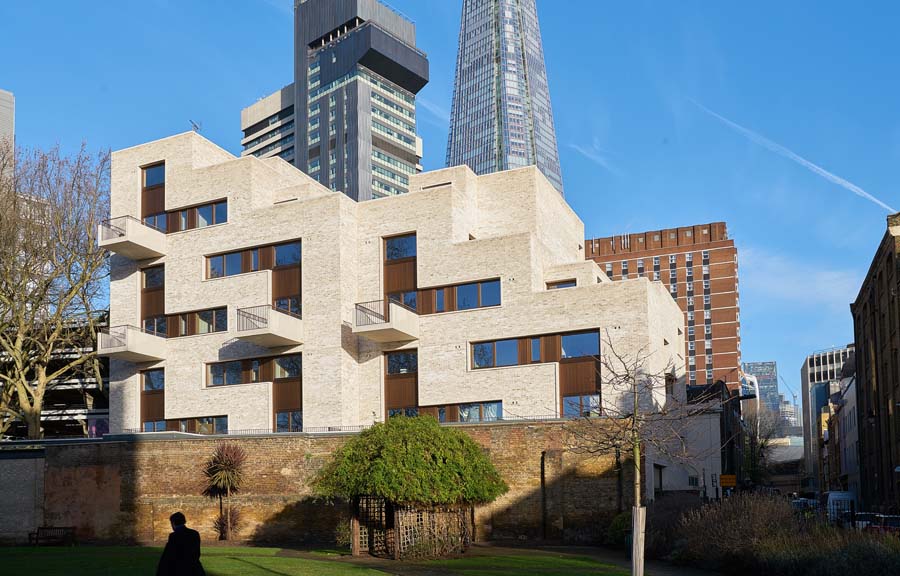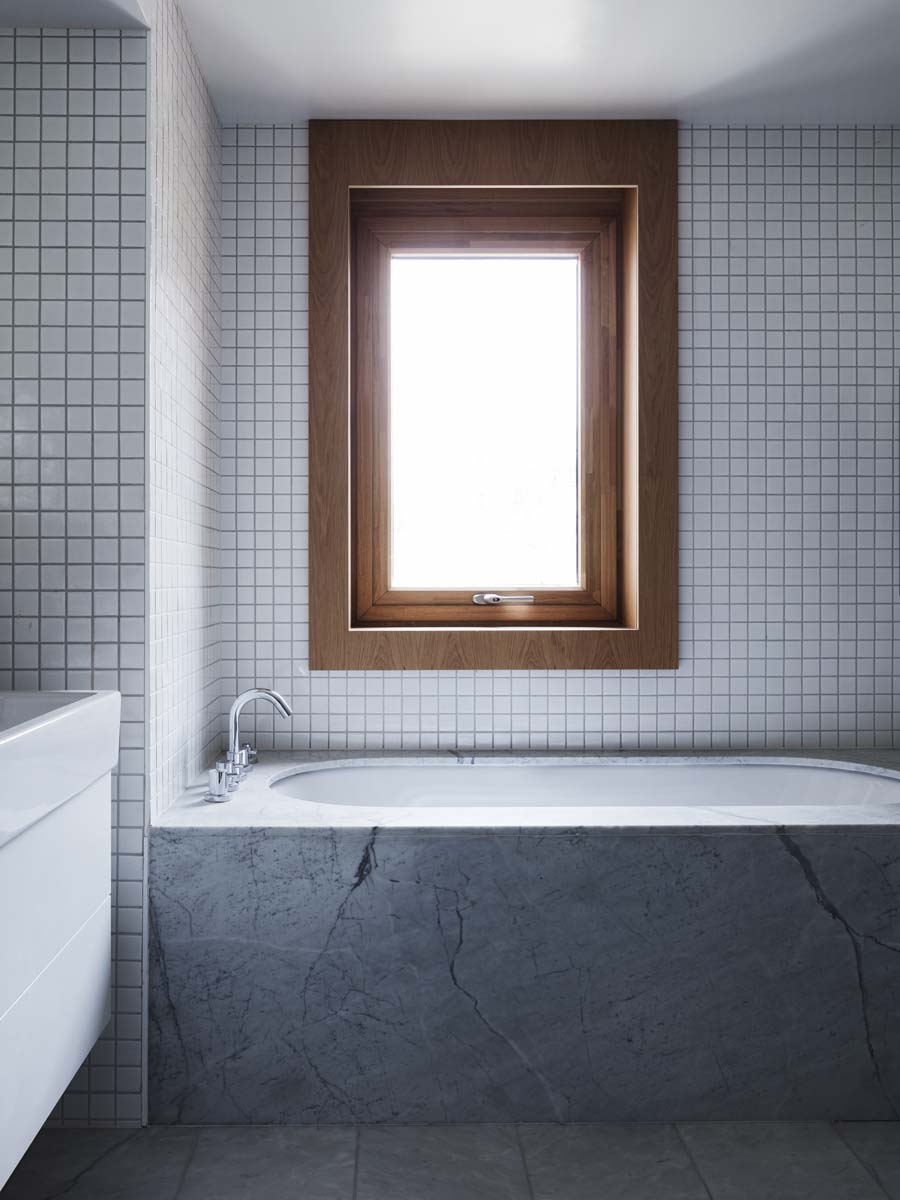
January 31, 2018
AHMM’s Refined Residential Complex in London Offers an Alternative to Cookie-Cutter Development
The Stirling Prize-winning firm and the developer Solidspace reinvent the mansion block in South London, but questions remain over affordability in the city.

Looking up at their newly completed project in Southwark, London, architect Simon Allford—the A in AHMM—and Roger Zogolovitch—formerly the Z in CZWG; currently the creative director of the developer Solidspace—finish each other’s sentences.
This architect-developer collaboration is dense with ideas for housing and a passion for a better London. Crucially, Zogolovitch is no ordinary developer. As laid out in his 2015 polemic book Shouldn’t We All be Developers?, he has been advocating for a different approach to development, one that addresses the far-reaching failures of developers to provide adequate housing and the rapidly diminishing trust of both the public and local authorities. “It’s a shame because the independent developer can bring new ideas and imagination and innovation into housing which desperately needs it,” he explains.
So what are these new ideas? Solidspace, which Zogolovitch set up in 2003 after becoming frustrated as an architect, has developed something of a brand based around “creative infill” and half-level apartment arrangements which emphasize internal volume over gross floor space. Each of its six projects has involved collaboration with celebrated architects, such as dRMM, Jaccaud Zein, and now AHMM (which took home the 2015 Stirling Prize for its Burntwood School). The results have been of high quality in material, form, and contextual awareness.

At the new Weston Street building, these hallmarks are evident again. The project, four years in planning and construction, sits on a small courtyard where the Solidspace office used to occupy a former print shed. Typical of the area, the surrounding structures encompass about two-hundred years of British architecture, from 19th Century townhouses to a Brutalist parking garage, to the Shard. Thus the brickwork allows the building to slot easily into the area, although the light tone of the bricks and strong rectilinear form of the silhouette avoid the derivative pastiche of a neighboring faux-warehouse.
The particular blocky mass of the structure—think Tetris played on Oculus Rift—accounts for the voluminous apartments inside. Eight unique units, five two-bedroom and three three-bedroom, interlock around a central staircase, with each apartment split over multiple half-levels.
Zogolovitch sees this arrangement as part of the Solidspace brand, something in the lineage of Modernist apartment innovations by Wells Coates, Denys Lasdun, and Eric Lyons’ Span Houses, as well as the more historic mansion block. The result is a striking sense of room in the apartments, more than the 1,000- to 1,600-square-foot floorplan would suggest. Both Allford and Zogolovitch describe the units more as houses than apartments, an idea reinforced by their multiple levels, multiple entrances from the staircase, and multiple outdoor spaces: uncannily long balconies or terraces nestled into the ziggurat roofs.

“The apartments are essentially as limited as the concrete that forms them and the timber that lines them,” explains Allford.
Handmade, board-formed concrete and solid oak or walnut floors, that is.
No expense is spared at Weston Street and there’s no getting around the fact that these are expensive properties for a particular social set (the remaining apartments are listed for over $2 million). “They’re obviously wealthy, but they’re no investors,”argues Zogolovitch—a revealing distinction in a broken housing market. These are homes for architecture connoisseurs: Barbicanites who have ventured South of the Thames.
Zogolovitch insists, however, that the Solidspace model has the potential to address the housing needs of a broader spread of the population. After 15 years of working as a developer he sees Weston Street as the culmination of an “experimental” period: “Now we’d like to go into more production, in other words being able to increase the numbers we produce. The next project is where we have an ambition for a bigger community of these units…. We’re trying to develop Solidspace at between 40 to 50 square meters [430 to 540 square feet] as opposed to between 100 to 150 square meters [1,000 to 1,600 square feet].”
This would, in theory, mean more chance of affordable properties, most likely for rent. The Weston Street building has gorgeous residences and good intentions for sure. But as Zogolovitch well knows the word of a developer is hard to take seriously in London today. As he puts it, “The planning system distrusts developers and you might say so quite rightly. I’m not going to argue with that.”
You might also like, “The Devil Went Down to Georgian: An Artist Investigates Britain’s 300-Year Architectural Infatuation.”






















